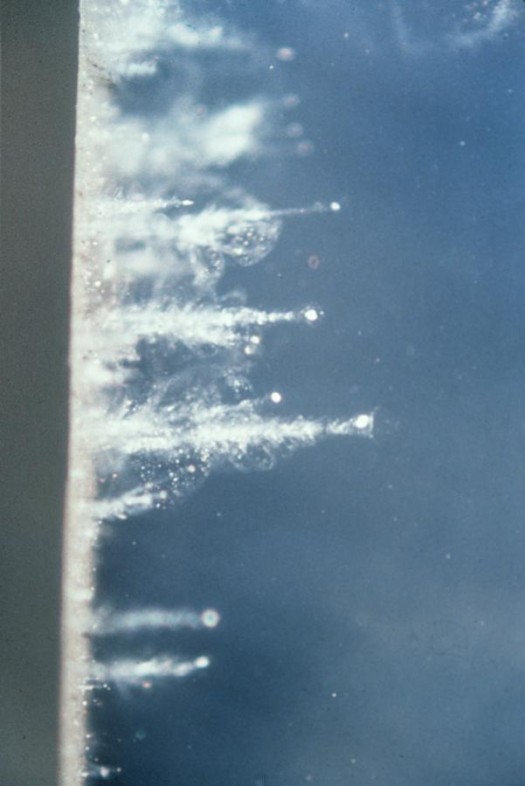Stardust Up Close
March 2005By Patrick L. Barry and Dr. Tony Phillips
Patrick L. Barry and Dr. Tony Phillips;>> Macro menumgr_macro_spaceplaceimage not found <<
Studying comets, then, can help scientists understand how our solar system formed, and how it gave rise to a life-bearing planet like Earth.
But comets have long been frustratingly out of reach -- until recently. In January 2004 NASA's Stardust probe made a fly-by of the comet Wild 2 (pronounced "vilt"). This fly-by captured some of the best images and data on comets yet ... and the most surprising.
Scientists had thought that comets were basically "rubble piles" of ice and dust -- leftover "construction materials" held together by the comet's feeble gravity. But that's not what Stardust found. Photos of Wild 2 reveal a bizarre landscape of odd-shaped craters, tall cliffs, and overhangs. The comet looks like an alien world in miniature, not construction debris. To support these shapes against the pull of gravity, the comet must have a different consistency than scientists thought:
"Now we think the comet's surface might have a texture like freeze-dried ice cream, so-called 'astronaut ice cream': It's solid and can assume odd, gravity-defying shapes, but it's basically soft and crumbles easily," says Donald Brownlee of the University of Washington, principal investigator for Stardust.
Scientists are currently assembling a 3-D computer model of this surface from the photos that Stardust took. Those photos show the sunlit side of the comet from many angles, so its 3-dimensional shape can be inferred by analyzing the images. The result will be a "virtual comet" that scientists can examine from any angle. They can even perform a virtual fly-by. Using this 3-D model to study the comet's shape in detail, the scientists will learn a lot about the material from which the comet is made: how strong or dense or brittle it is, for example.
Soon, the Stardust team will get their hands on some of that material. In January 2006, a capsule from Stardust will parachute down to Earth carrying samples of comet dust captured during the flyby. Once scientists get these tiny grains under their microscopes, they'll get their first glimpse at the primordial makings of the solar system.
It's heading our way: ancient, hard-won, possibly surprising and definitely precious dust from the construction zone.
Find out more about the Stardust mission at stardust.jpl.nasa.gov. Kids can read about comets, play the “Tails of Wonder” game about comets, and hear a rhyming story about aerogel at http://spaceplace.nasa.gov/en/kids/stardust/.

The Stardust spacecraft used a grid holding aerogel to capture dust particles from comet Wild 2. In this test, high velocity dust particles are stopped unharmed at the end of cone shaped tracks in a sample of aerogel
This article was provided by the Jet Propulsion Laboratory, California Institute of Technology, under a contract with the National Aeronautics and Space Administration.



